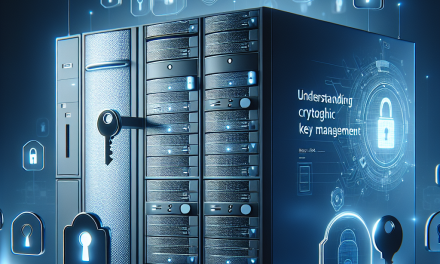As organizations increasingly rely on remote access technologies like Remote Desktop Protocol (RDP), ensuring robust security becomes paramount. While traditional password-based authentication has been the default choice for securing RDP sessions on Windows Server, it is often insufficient against today’s sophisticated cyber threats. This article delves into advanced authentication methods that enhance RDP security, enabling administrators to protect sensitive data and maintain operational integrity.
Understanding the Risks of Password-Based Authentication
Passwords, despite being a critical security measure, come with inherent vulnerabilities:
- Weak Passwords: Users tend to create easily guessable passwords, making it easier for cybercriminals to gain unauthorized access.
- Phishing Attacks: Attackers often trick users into revealing their credentials through phishing schemes.
- Brute Force Attacks: Automated tools can rapidly guess passwords, especially if account lockout policies aren’t enforced.
Recognizing these threats, organizations should explore more advanced authentication mechanisms.
Advanced Authentication Methods for RDP
1. Multi-Factor Authentication (MFA)
Multi-factor authentication requires users to provide two or more verification factors to gain access, significantly enhancing security.
- How It Works: Along with their password, users must offer a second factor, which could be a time-sensitive code sent to a mobile device, a fingerprint scan, or a hardware token.
- Implementation: Windows Server can integrate with various MFA solutions, including Microsoft Authenticator, Duo Security, and others, which can be configured via Group Policy or through Remote Desktop Gateway settings.
2. Smart Card Authentication
Smart cards are physical devices that store user credentials securely.
- How It Works: Users must insert their smart card into a reader and enter a PIN to authenticate.
- Benefits: Smart cards provide a higher level of security than passwords alone and are resistant to phishing attacks.
3. Windows Hello for Business
Windows Hello offers a more personal and secure way to log into devices, applications, and networks.
- Key Features: It replaces passwords with biometric authentication (facial recognition or fingerprint) or a PIN tied to the device, making it hard to replicate.
- Implementation: Organizations can set this up through Group Policy and integrate it with Azure Active Directory for additional security.
4. Certificate-Based Authentication
This method uses digital certificates to verify the identity of users and devices.
- How It Works: A user’s device must present a valid digital certificate to the RDP server before access is granted.
- Benefits: Certificates can be more challenging for attackers to replicate, providing enhanced security.
5. Conditional Access Policies
Conditional access improves security by evaluating the context of user access requests.
- Example Policies: Access can be granted based on user location, device compliance, or risk level associated with the login attempt.
- Benefits: This approach ensures that even if a credential is compromised, the attacker’s ability to access resources is limited.
Best Practices for Implementing Advanced Authentication
1. Educate Users
Regularly provide training to educate users about the importance of security and how to recognize potential threats like phishing.
2. Regularly Update Authentication Solutions
Ensure that all software and hardware used for authentication are up-to-date to protect against vulnerabilities.
3. Monitor and Review Access Logs
Regularly review access logs to identify any suspicious activity and respond promptly.
4. Combine Methods
Utilize a combination of authentication methods to create a layered security approach, thereby reducing the chances of unauthorized access.
5. Enforce Strong Password Policies
While transitioning to advanced authentication, maintaining strong password policies is still vital as part of a comprehensive security strategy.
Conclusion
As cyber threats evolve, so too must the strategies we employ to secure remote access to our systems. Moving beyond passwords to advanced authentication methods not only strengthens RDP security but also builds a culture of security awareness within the organization. By implementing multi-factor authentication, smart card access, and other advanced techniques, organizations can better protect their sensitive data and maintain operational integrity in an increasingly digital world.
For more on Windows Server security practices and the latest technologies, stay tuned to WafaTech Blogs.





